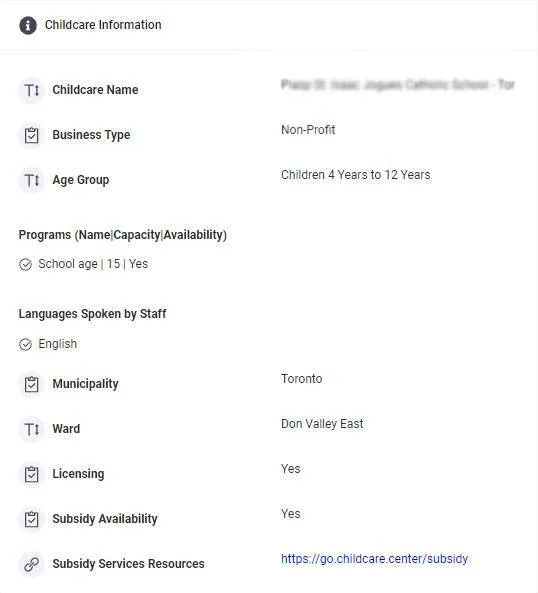What type of strategies do parents use to manage childcare costs?

Raising a child and finding the right center to care children for him can be an overwhelming task, and often an expensive one. The costs associated with children can be daunting for many parents. With the cost of care rising quickly and access to affordable child care options limited, it is becoming increasingly difficult for families to cover these expenses. As a result, parents are looking for creative strategies to manage their childcare costs.
These strategies may include budgeting, seeking out government assistance, finding alternative care arrangements, and more. By understanding how to better manage their childcare costs, parents can reduce their financial burden and ensure their children receive the best possible care. Parents have some great insight into how they manage these costs and offer some inspiring ideas. In this article, we will share tips from working parents who have found creative ways to cover the high cost of child care.
How Much Average Daycare Costs Are?
For parents in Ontario, understanding the childcare costs is essential for budgeting and planning for their children's future. It’s no secret that babysitting fees can have a significant impact on family finances. On average, full-time infant care can cost anywhere from $1,000 to $2,500 per month. For a toddler in Toronto day care, the average cost may range from $850 to $2,200 per month. Day care prices vary depending on location and quality of care provided. In addition to monthly fees, there are often additional costs such as registration or activity fees that must be taken into account when looking at care options.

Parents should also consider factors such as staff/child ratio, curriculum, and special programming when making their decision. When considering child care costs, it’s important to remember that quality child care is an investment in your child’s future and will ultimately be worth the expense.
For more information about the costs that Canada-Wide Early Learning & Child Care System (CWELCC) considers for keeping children in Child Care Centers and Family Child Care, Reading How Much Is the Cost of Daycare in Ontario? article gives you a clear point of view about the cost of different available programs for children throught the Ontario.
Prime Minister, Justin Trudeau, stated that Budget 2021 establishes a goal of establishing affordable child care for all families within the next 5 years. By building an early learning and child care system, we will make life more affordable for Canadian households, create new jobs, grow the middle class, increase women s participation in the workforce, and drive strong economic growth. Reduced fees are also anticipated for licensed child care by March 2026, when fees will only be $10 a day. This program is called $ 10 a day childcare and you should consider that there are other programs also in place that help parents cope with the added expenses of raising a family, such as the Canada Child Benefit.
Make a Plan to control skyrocketing costs of child care
When it comes to managing childcare costs, budget worksheets can be a great first step. A budget worksheet requires you to list all of your sources of income, including any wages or salary, along with any additional income such as investment returns or rental income. Knowing where your money comes from and where it goes can help you make smart decisions about what you can realistically afford for childcare expenses.
You will also need to list all of your expenses, including housing costs, transportation fees, debt payments and other regular expenses. Once these numbers are plugged in, the worksheet will show you how much money is left over each month after your typical necessary spending has been accounted for. The results of the budget worksheet will give you an idea of how much money is available for childcare.
|
Some examples of family monthly expenses |
||||
|
Housing or Rent |
Student Loans |
Transportation |
Entertainment |
Cellphone |
|
Health insurance |
Debt payments |
Retirement |
Travel Expenses |
Utilities |
|
Memberships and subscriptions |
Savings contributions |
Food and dining out |
pet care & Pet Insurance |
Clothing and Personal Upkeep |
|
Childcare and School Costs |
Streaming services, cable and internet |
|
||
However, in order to find the care that best suits your family’s needs, it is important to research other options. By researching different types of care available in your area and the associated costs, you can find creative ways to make the monthly cost more manageable.
When exploring child care options, it's wise to consider a variety of arrangements beyond traditional day care centers or in-home nannies. Collaborative solutions like shared babysitting with trusted friends or relatives can be both cost-effective and comforting. Additionally, some care facilities may offer flexible pricing to accommodate your financial needs. For a deeper dive into the pros and cons of home-based versus center-based child care, visit What is the Difference Between Home-Based Childcare and Center-Based Childcare?
Get Creative with Payment is essential to plan ahead for expenses
When it comes to child care services, choosing the right way to pay can lead to significant savings. Managing the childcare costs is an important part of many families budgets, and finding ways to manage expenses can help families save money. Whether you are opting for full-time daycare or in-home care, there are a variety of options to choose from when it comes to paying for care services.
Depending on your situation, you may be able to benefit from subsidies or tax credits that can help lower costs; or you may want to explore hourly rates or monthly payments for individual services. Researching the different payment options available and understanding how those payments might impact your budget could ultimately save you hundreds or even thousands of dollars a year. Look for Subsidy Availability on a center's page at kinderpage.ca in the Childcare Information section to determine whether it offers subsidies.
A Dependent Care Flexible Spending Account (DCFSA) is a solution to use to manage the cost and save money in North America. This tax-advantaged account allows you to set aside pre-tax dollars for eligible child care expenses, helping families reduce the cost of daycare.
The DCFSA provides benefits over traditional methods of paying for nursery. For example, when you use pre-tax dollars in your DCFSA, you get an automatic discount on your expenses as these funds are deducted from your paycheck before taxes. Furthermore, because the federal government offers a Child and Dependent Care Tax Credit of up to $3000 per dependent (under 13 years old) or $6000 per household, the savings from using a DCFSA can be significant.
Start Your Own Business or paricipating in the child care help you to manage budget
The thought of being the one to call the shots and be your own boss can be appealing. Many parents who are raising their own children with a stay-at-home lifestyle might find that starting an in-home day care business could give them both financial stability and flexibility while they also get to spend more time with their family.

For those looking to become a child care provider, there are many advantages including having control over your own hours, setting rates, and deciding how many children you want to take on at once.
You will have the opportunity to raise your own child while providing quality care for other children as well. You will have the opportunity to provide high-quality care for other families’ children, potentially allowing for a better income than when working outside the home.
The key to success is making sure that babysitting is safe, reliable, and enjoyable for everyone involved. You will need to build trust with parents by developing clear policies and procedures, providing healthy meals and snacks, and ensuring the safety of all children in your care. If you're looking for strategies to promote and market your child care business, HOW TO PROMOTE & MARKET YOUR CHILD CARE BUSSINESS? provides valuable insights and tips.
Additionally, creating a warm and nurturing environment where children can learn and grow will help ensure your in-home child care business remains successful. And You will have the convenience of working from home which means that you can keep an eye on your own children as well.
Take advantage of Government subsidies to manage the cost of child services
Child care subsidies can be a key to managing the cost of raising children. These government subsidies can help you cover a portion of your babysitting expenses and make it easier for you to provide quality care for your children. Childcare costs are often overlooked when it comes to budgeting but with many families relying on two incomes, it is critical that parents have access to safe and reliable nursery options.
You may be eligible for subsidies or other programs specifically designed to help parents meet their nursery needs. Depending on where you live, these programs may provide funding for after school programs as well as daycare centers or in-home care providers. Depending on your state of residence, government subsidies may include assistance programs which helps low-income families with the cost of babysitting, or other initiatives that help families afford quality child care services.

For example in Aleberta, Families with an annual income of less than $180,000 with children enrolled in a licensed preschool program can apply for a subsidy of $125 per month (Child care subsidy | Alberta.ca ) or in Ontario You can apply if your child is under 13 years old and in either:
- a licensed child care program (centre-based, home-based or in-home services)
- a child enrolled in a “children's recreation program”
- a camp
- a before- and after-school program operated directly by a school board (Financial Support for Child Care - Ontario.ca )
It's important to research all available options and take advantage of any assistance you qualify for in order to keep the costs associated with raising your kids manageable.
Is QUALITY CHILD CARE expensive?
When selecting quality providers, parents can apply to practical strategies to make child care more affordable. Real working parents are often in need of reliable and high-quality child care centers, however they are usually the most expensive options. This makes it difficult for families to balance paying the bills while giving their children the best start in life.
That is why it's important to research carefully and find a provider who meets your budget requirements. It's also important to look into the facilities and staff available at the center, as well as any licensing and certification requirements. Additionally, don't be afraid to ask questions about their childcare policies and routines. Ultimately, researching carefully and comparing all the different options will ensure that parents make an informed decision when selecting quality child care for their children. When it comes to finding and choosing quality child care, this comprehensive guide offers helpful tips and considerations: HOW DO I FIND AND CHOOSE QUALITY CHILD CARE?
By understanding what types of assistance parents may qualify for, researching different options and utilizing long-term planning strategies, such as savings accounts and tax credits, parents can find ways to cover the costs associated with high-quality child care services. Parents should also take into consideration other factors when selecting a babysitting program such as location, hours of operation and curriculum offered by comparison shopping among centers in order to get the best value for their money.

Conclusion: How to manage childcare costs?
In conclusion,there is no single solution to making nursery services more affordable for parents. Parents are increasingly searching for strategies to make childcare services more affordable. With the cost of childcare often exceeding the amount families can afford, parents are looking for creative solutions to help reduce the financial burden of caring for their children.
The truth is that it will take a collective effort from all involved parties—from local and state governments, businesses, and individuals—to create a system that works for everyone. One potential strategy is to look into government subsidies and tax credits that may be available in their area. Additionally, parents should make a paln to manage their budget and in this solution working parents can help you list all sort of costs. Then, choose the right way to pay can lead to significant savings.
Finally, some families have found success by running a home-based business to care children. This help the convenience of working from home and keep an eye on their own children as well. By exploring all available options, parents can often find a solution that helps them provide quality care for their children while keeping costs within their budget. It is also important to remember that quality care is worth the investment.















